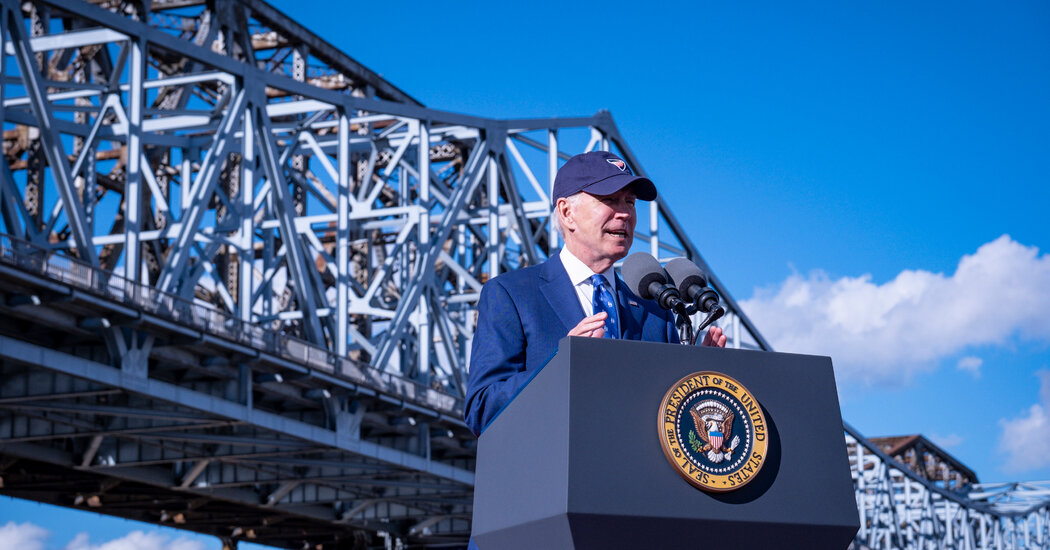U.S. Infrastructure Report Card: Improvement & Funding Challenges
A report card from an engineering group found that American roads, ports, and other infrastructure got better last year but could be hurt if federal funding is reduced. Increased federal spending in recent years has helped to improve U.S. ports, roads, parks, public transit, and levees, according to a report released on Tuesday by the American Society of Civil Engineers. But that progress could stagnate if those investments, some of which were put on hold after President Trump took office in January, aren’t sustained. Overall, the group gave the nation’s infrastructure a C grade, a mediocre rating but the best the country has received since the group’s first report card in 1998. Most infrastructure, including aviation, waterways, and schools, earned a C or D grade; ports and rail did better. The group also projected a $3.7 trillion infrastructure funding shortfall over the next decade.
Improvement and Challenges in American Infrastructure
Despite these challenges, there is a consensus among stakeholders that continued investment is pivotal for the progress and upkeep of American infrastructure. The emphasis on infrastructure is not solely about maintaining existing systems but also about advancing new technologies and capacities to meet future demands. The investment is particularly crucial in the face of growing needs within the transportation sector, where outdated aviation systems and insufficient workforce numbers threaten efficiency and safety. Similarly, the energy sector’s struggle to meet the burgeoning demands calls for innovative solutions and more robust investment strategies. Looking ahead, the engineering group underscores the importance of cohesive planning and commitment from federal, state, and local governments to ensure that infrastructure improvements are sustainable and can accommodate technological advancements and population growth. It is hoped that the forthcoming measures will not only address the current inadequacies but also lay a firm foundation for future development, ensuring that the nation’s infrastructure supports a thriving economy and improved quality of life for all Americans.
Impact of Federal Funding on Infrastructure Progress
Aviation infrastructure is considered increasingly outdated by industry experts and faces significant challenges. Notably, the Federal Aviation Administration (FAA) has been experiencing a persistent shortage of air traffic controllers, which exacerbates the situation. In addition to aviation, the energy sector has seen a downgrade, receiving a D+ grade, indicating poor conditions. The engineering group has highlighted that power plants and other electricity sources have struggled to meet the rising demand driven by electric vehicles and artificial intelligence. Otto Lynch, an engineer who spearheaded the energy section of the report, pointed out that the energy consumption of each data center is equivalent to the power needed for 80,000 homes. He also noted that while new energy sources are being introduced, they are largely just replacing decommissioned coal-based sources, resulting in stagnant generation capacity.
Increased Federal Spending Improves Infrastructure Ratings
The impact of deteriorating infrastructure can be far-reaching, affecting everyday lives and the broader economy. Traffic congestion, caused by poor road quality, can lead to delays and increased fuel consumption, while outdated ports might slow down the efficiency of trade. Additionally, inadequate infrastructure, such as aging dams and levees, poses safety risks and can be especially vulnerable in extreme weather events, leading to potentially catastrophic consequences. Schools with poor facilities may not provide students with a conducive learning environment, affecting educational outcomes. Addressing these issues through strategic investment and modernization can help mitigate these challenges, ensuring the infrastructure meets the demands of a growing population and evolving technological landscape.
Future Prospects for American Infrastructure
In conclusion, while the United States has seen some improvements in its infrastructure due to increased federal investment, significant challenges remain. Sustained funding and investment are essential to maintain and further advance these improvements, especially in areas that continue to receive low grades. As infrastructure plays a critical role in economic strength and job creation, it is crucial for the new administration and Congress to prioritize infrastructure investment to meet the country’s needs. The progress made so far highlights the importance of continued bipartisan support and commitment to overcoming the identified funding shortfall.















Post Comment